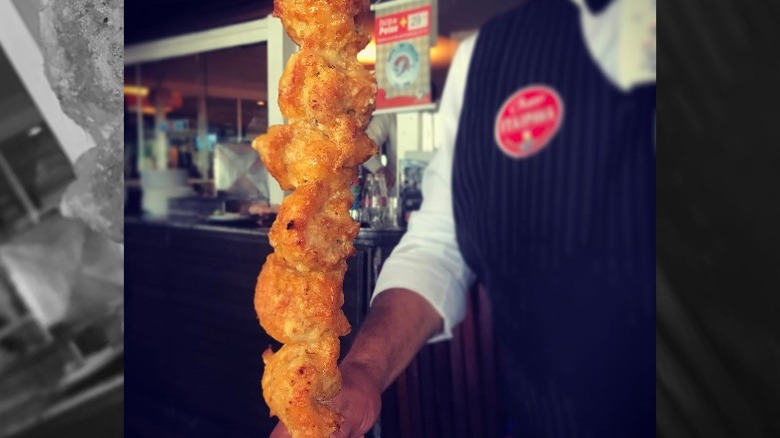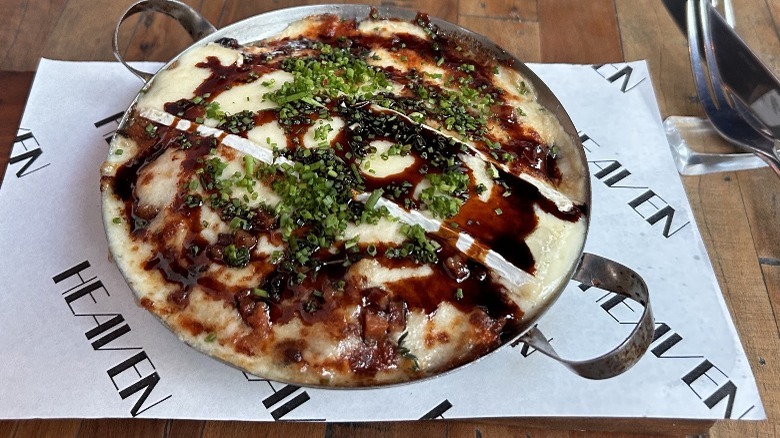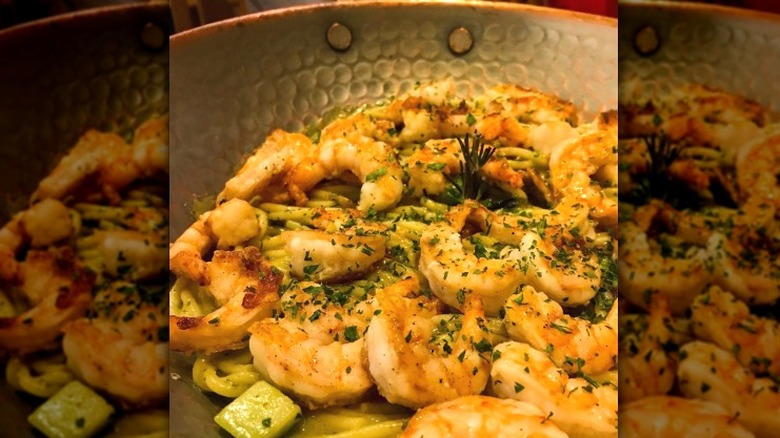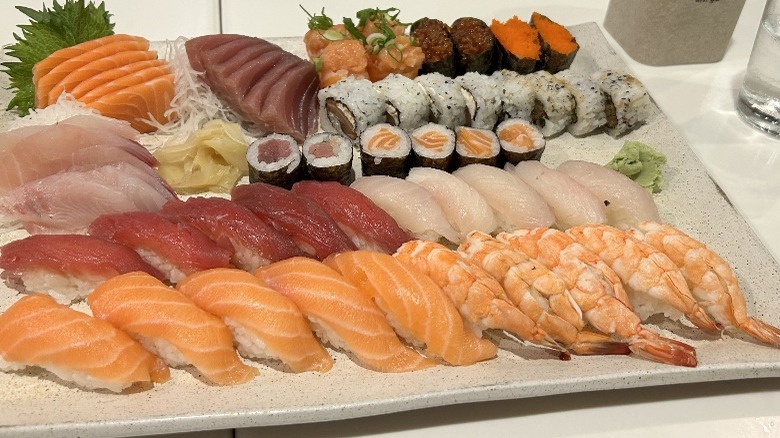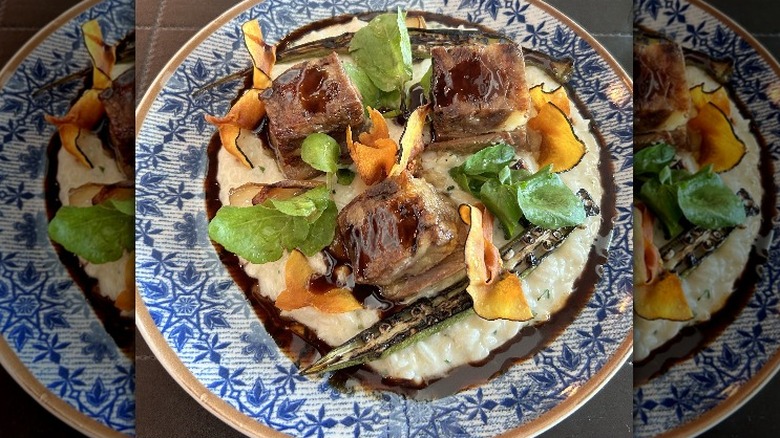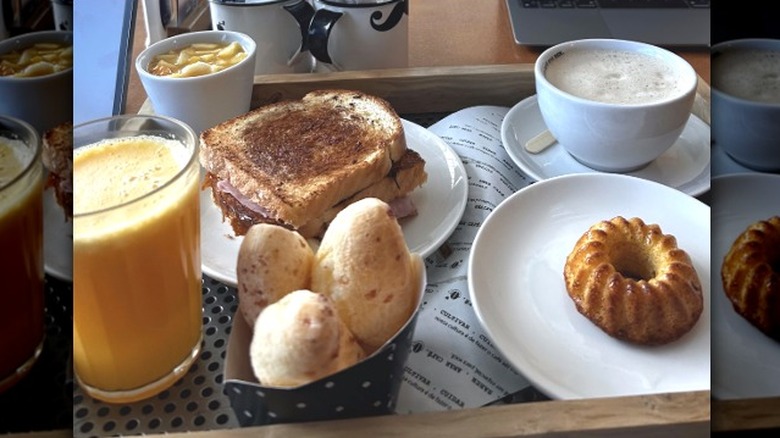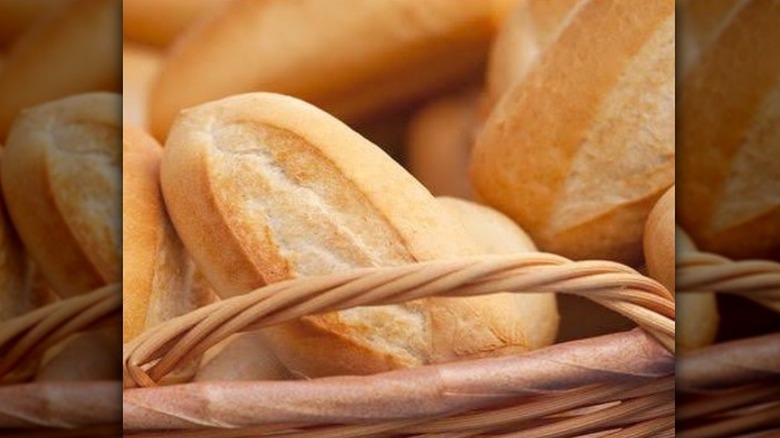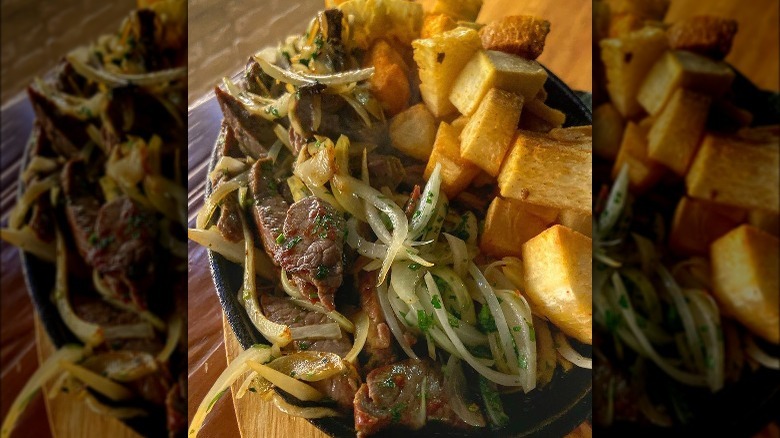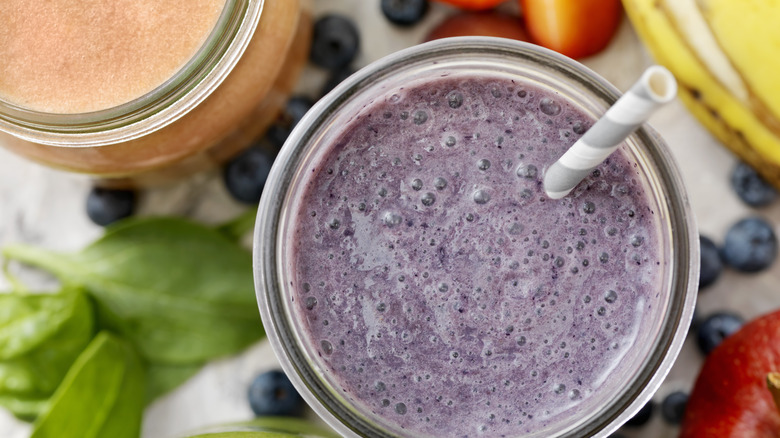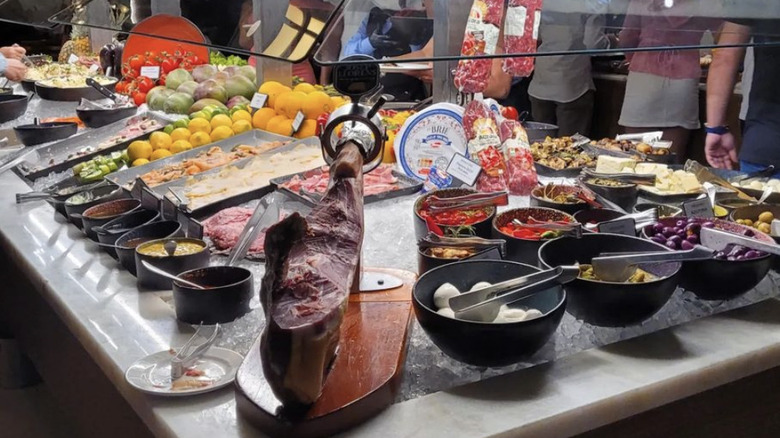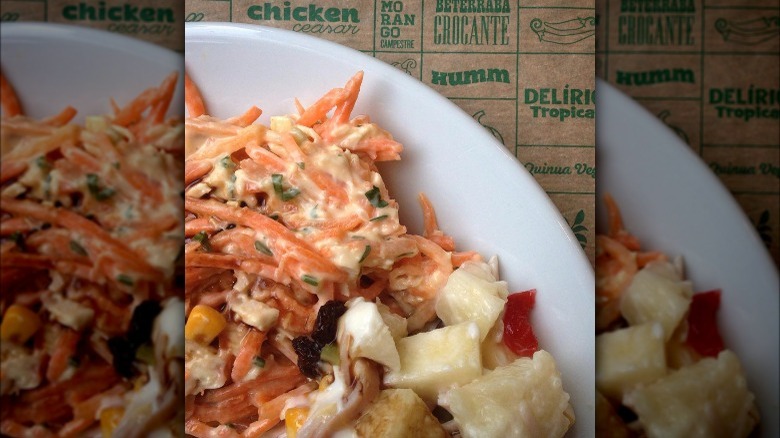Where To Eat In Rio De Janeiro 2023
It's no secret that Brazilian food can be absolutely delicious. From the Northeast's delightful shrimp moqueca to São Paulo's sushi scene, Brazil has some incredible eats to offer — even beyond its famous all-you-can-eat BBQ restaurants. However, while Brazilian cuisine can certainly be wonderful, it is not always easy for tourists to find the best restaurants while traveling in "The Land of the Palms," as the Tupi people once called it.
This was especially apparent back in 2016 when The New York Times journalist, David Segal, headed to Rio de Janeiro and hinted that it was just too hard for him to find a good place to eat. The critic wrote, "[D]on't assume that you will find one of these standouts [restaurants] by chance. Without a plan, you are more than likely to wind up at one of the city's many subpar pizza parlors." While Segal's review is perhaps a little bit too critical (There are plenty of great pizza options in Rio), it is also true that foreigners might need a little bit of help to find the city's best eateries.
The good news is that we have taken the time to try out more than a few Rio de Janeiro restaurants, and compiled a list of our 2023 top picks. From a bistro that serves grilled fish on a literal sword to a farm-to-table buffet with extraordinarily fresh vegetables, these are some of our favorite places to eat in the "Cidade Maravilhosa."
Toca da Traíra
If you've never had the chance to sink your teeth into the thick juicy goodness of a pintado fish, this is your chance. Unlike smaller fry like sardines or tilapias, pintados tend to be really large and meaty. In fact, they can span almost 6 feet long and weigh up to 176 pounds. Because of this, not all restaurants serve this delicacy — or even know how to prepare it properly.
Luckily, one Rio de Janeiro restaurant makes some of the best pintado around. Located near the beach in the neighborhood of Barra da Tijuca, Toca da Traíra is a fish-centric eatery that prides itself on the art of breaking its pintado down into pieces — literally. The restaurant cooks this flavorful fish by cutting it into chunks, stacking them onto a metallic sword, and grilling them over the "brasa," or bed of hot coals. The result is a type of fish that is crispy on the outside yet light and flaky on the inside, proving patrons with that perfect contrast of textures.
Folks who are feeling particularly decadent should order the "pintado na brasa." This is a type of grilled pintado that is served with rice and "catupiry" — a traditional Brazilian cheese topping that is both thick and luxurious. When combined with pintado, this spread calls to mind other salty yet fresh pairs, like cream cheese and lox.
D'Heaven Restaurant
To get a taste for what local, Rio de Janeiro chefs are up to, try heading to D'Heaven Restaurant. This restaurant is run by head chef, Heaven Delhaye, who was a contestant on "MasterChef Profissionais" — an iteration of "MasterChef Brasil" that was limited to top culinary experts. At D'Heaven Restaurant, Delhaye proves just how sensational of a professional she is, providing patrons with her own take on Brazilian/French fusion.
In practice, this means that the menu involves creative items like an ossobuco croquette that is stuffed with regional ingredients like guava paste and queijo minas — a type of Brazilian fresh cheese. Also worth ordering are the baguettes made of "pão de queijo," or a popular local "cheese bread" made with tapioca flour. While these mixtures might not sound obvious at first, Delhaye just seems to make them work. Indeed, the chef uses typical Brazilian ingredients to enhance the rich sauces and meats that are traditionally part of French cuisine. In the end, this is perhaps a reflection of her own identity, as the Brazilian-born Delhaye is the daughter of the French chef, Marie Jeanne Juliette.
Although it might be tempting to reserve a table at D'Heaven Restaurant, our recommendation is to pass by there at lunchtime for a three-course prix fixe menu that costs 89 reais, or a little under $20. This is by far the most cost-effective way to enjoy this restaurant and try a bit of everything.
Camarada Camarão
While Rio de Janeiro certainly offers plenty of upscale dining experiences, there are also some incredible places to enjoy more casual dining. Camarada Camarão is a fun, laid-back restaurant that will likely draw you in with its flavorful dishes and lighthearted beach decor. True to its name, which means "Comrade Shrimp" in Portuguese, this restaurant serves, well, a whole lot of shrimp in some really unique ways.
The restaurant offers several scrumptious options, like a 1.10-pound plate of peel-n-eat shrimp, or an Alfredo and shrimp soup served in a bread bowl. That being said, our top dish is hands-down the "Grelhado Mercatto," or grilled market fare. This dish involves ¾ pound of fresh shrimp that has been cooked in olive oil, garlic, parsley, and white wine. In this classic combination of ingredients, the acidity of the wine balances out the fattiness of the olive oil, allowing the seaside flavors of the meat to shine.
Naturally, though, the chefs at Camarada Camarão add a fun twist to the recipe by throwing pepperoni peppers into the mix. This curveball ingredient brings a mild yet ever-present spice element to the recipe, infusing the shrimp with a smoky flavor. Folks who would like to add even more heat to the dish can also add some of the house's hot sauce, a blend of palm oil, and other local spices that will have your mouth burning in no time.
Gurume Sushi
Sushi might not be the first thing that people think of when they imagine Brazilian food. However, Brazil has one of the largest Japanese immigrant populations in the world. There are approximately 1.6 million people of Japanese descent currently living in Brazil, and because of this, you can find some pretty top-notch sushi in many of the country's urban metropolises.
If you're looking for a stand-out Japanese restaurant in Rio de Janeiro, check out Gurume Sushi — a hip eatery located steps away from the beach at São Conrade. This amazing eatery offers super fresh fish served with rice that is soft yet warm. Don't hesitate to dunk your sushi into the restaurant's house-made shoyu sauce — a deeply umami-flavored liquid that contains small amounts of seafood. Complex yet light, this sauce is the perfect way to accentuate the natural seaside flavors of the meat.
In order to get a taste of all the different fish options, try ordering one of the "combinados" — a plate that contains a sampling of options made from salmon, tuna, white fish, and more. However, if you are feeling a bit more adventurous, go ahead and order one of the Brazilian/Japanese fusion dishes, such as the "banana da terra" roll, which is made from a local savory banana. The quiabo, or "okra," roll is also scrumptious, and full of earthy flavors.
Heaven Cucina
Japanese food is not the only type of international cuisine that you can enjoy at Rio de Janeiro restaurants. The city also has a strong culture of serving Italian food — a result of Brazil's strong historical ties to the European nation. Indeed, as the local outlet, R7, has reported, just shy of 15% of Brazilians have the right to an Italian passport. In practice, that means 30 million Italian-Brazilians reside in "The Land of the Palms" today.
Of course, while there are many incredible pizza joints and pasta places in Rio de Janeiro, one of our top picks for Italian food is Heaven Cucina, which is run by the aforementioned "MasterChef Profissionais" contestant Heaven Delhaye. Located in a sunny corner of a shopping center in the Jacarepaguá neighborhood, Heaven Cucina might be a little bit out of the way for most tourists. However, the dining experience is well worth the taxi ride. The restaurant's ambiance is secluded yet bright, with plenty of palm trees and air-conditioned indoor tables decorated with bright green umbrellas. Plus, the food is amazing.
Sink your fork into Heaven Cucina's meaty rib risotto, which is garnished with a salty yet intense layer of parmesan cheese. In this dish, the fattiness of the meat blends perfectly with the creaminess of the rice to create a flavor that is succulent and rich. The grilled squid is also a definite must — a true Italian classic that blends the intense umami of the seafood with decadent olive oil.
Café Cultura
If you are looking for a place to work, snack, or brunch in a comfortable setting, head over to Café Cultura. This sunny coffee shop boasts wide tables and comfortable chairs — the perfect environment to sit back, relax, and sip a cup of the world-famous Brazilian coffee. Here, you can enjoy anything from the more traditional French press or pour-over coffees to modern variations, such as a Nutella-infused latté or a macchiato served with a hard chocolate shell sealing the top. Either way, the baristas are prepared to serve up a high-quality drink with a beautiful presentation.
Of course, coffee is not always consumed on its own, and, in Brazil, breakfast is referred to by the phrase "café de manhã" — which literally translates to "morning coffee." As such, Café Cultura offers plenty of fantastic breakfast items, including the option of ordering "Brazilian brunch." This scrumptious meal involves three pieces of hot "pão de queijo," or cheese bread, as well as a slice of cake, a ham and cheese melt, tropical fruit salad, fresh-squeezed orange juice, and a coffee. In other words, it is like a crash course in Brazilian breakfasts. The best part is that the whole ensemble sells for 52 reais, or about $10.
Folks who aren't feeling especially hungry, meanwhile, may prefer one of the café's juices, which are all freshly-squeezed and made-to-order. Our choice is the "tropical mix," which blends mangoes, oranges, strawberries and pineapples into a mouthwatering juice.
Zona Sul - Avenida das Américas
While Café Cultura offers a more coffee-oriented breakfast experience, there is another Rio de Janeiro eatery that focuses more on the food ... and, yes, it's a LOT of food. Located right on the water, the Zona Sul grocery store on Avenida das Américas in the Barra da Tijuca neighborhood takes the concept of brunch to a whole new level. Every morning, this small market clears out a full counter and piles it with different kinds of eggs, bread, cakes, sweets, and tropical fruits. Clients can then fill up their plates in a buffet-style serving process and pay for their breakfast based on how much their plate weighs.
Beyond the fun sort of novelty of this experience, eating breakfast at Zona Sul is a great way to sample tons of Brazilian favorites. Folks who are have a sweet tooth should definitely try the cuzcus doce de tapioca — a soft cake-like dessert made with freshly-grated coconut bits and ultra-creamy condensed milk. Meanwhile, people after something more balanced might consider a plate of "Romeu e Julieta," the local nickname for the perfect combination of creamy "minas" cheese and thick guava paste.
Another crowd-pleaser is the "pão frances," or "French bread," which is essentially the ultra-soft, melt-in-your-mouth Brazilian interpretation of a baguette. After your meal, step right out onto the Barra da Tijuca beach, wander the sands, and consider buying a bottle of coconut water to wash it all down.
Salve Simpatia - Niterói
Rio de Janeiro is an active city, and that means that there are tons of different food scenes to explore during different times of the day. To get a feel for the rich, "carioca" bar scene, cross the bridge to Niterói, where you can find an evening eatery called Salve Simpatia. Here, the vibe is historic yet fun, with black and white photos of musicians on the walls and an enormous chandelier made of Heineken bottles dangling from the ceiling.
As for the food, Salve Simpatia's menu focuses on "petiscos" — or "bar bites" — which are easily shared with the whole table. The sliced "pancetta" is actually to die for. Think of succulent pork belly slices served with an assortment of rich, flavorful sauces. Our favorite is a Thai/Brazilian fusion dip that mixes guava and sriracha, bringing local flavors into the classic Thai hot sauce. Meat lovers should also try the "Paraíba Atolado," a dish that mixes onions and mandioca with a special type of steak called "carne de sol." Originally from the Northeast of Brazil, this steak is made by first drying the meat to give it a more aged flavor, and then slow-cooking until it falls apart in your mouth.
Salve Simpatia also offers an extensive drinks menu. Taste a Brazilian caipirinha mixed with tangerine, passionfruit, or even "rapadura" — a traditional brown sugar candy. Liquor purists will also be pleased to see the locale's cachaça sampling menu.
Hortifruit
One of the best parts of traveling to Brazil is having access to a wide range of delicious tropical fruits — and their delicious juices. After all, as reported by Opportimes, Brazil has a lot of fresh produce to choose from and even snagged the spot for the world's number one fruit juice exporter in 2022. However, freshly squeezed juices tend to taste way better than their commercialized, packaged, or frozen counterparts. Because of this, many Rio de Janeiro restaurants offer mind-blowingly flavorful juices, and the best among them is arguably Hortifruit.
Hortifruit is a typical Brazilian grocery store that focuses almost exclusively on the sale of fresh produce. This means that you can go there to pick up pre-sliced mango, whole apples (which are somehow sweeter than candy), or one of Brazil's many different banana varieties. Because all of the produce is extremely fresh, it is really next-level stuff. Some of these fruits are so sugary and so juicy that they can rival just about any dessert.
The true star of the show, however, is the locale's selection of homemade fruit juices — most of which are blended on the day of the sale. The orange, carrot, and ginger juice, which offsets the ultra-sugary taste of the local oranges with the tangy spiciness of the freshly grated ginger is an absolute favorite. The coconut water is also worth trying, as the store harvests it every morning straight from the source.
Fogo de Chão
It is almost impossible to talk about Brazilian cuisine without mentioning the country's world-famous BBQ restaurants. Known in Brazil as "churrascarias," these steakhouses oftentimes come in rodízio form — meaning that waiters carrying swords full of meat will walk through the restaurant, offering you different cuts cooked to perfection. Of course, Fogo de Chão is one of the most famous churrascarias, both in Brazil and abroad. So, if you are looking for a place to eat in Rio de Janeiro, this locale is a sure shot.
The Fogo de Chão in the Barra da Tijuca neighborhood offers a clean, modern environment, excellent steak, and deluxe service. The most common thing to enjoy here is the rodízio, which comes complete with must-order dishes, like grilled chicken hearts and top sirloin.
However, even if you are not in the mood for an all-you-can-eat experience, don't write this restaurant off. In fact, Fogo de Chão has a fantastic weekday happy hour from 5 to 8 p.m., which allows you to enjoy smaller quantities of food on more affordable sharing plates. Our top pick is the "Tábua de picanha fatiada," or the sliced sirloin steak board. The meat, which has been lightly seasoned with salt, tastes delicate and rich all at the same time, practically melting in your mouth. It's also worth trying the "Tábua de costeleta de cordeiro," a lamb ribs tasting board served with a refreshing mint sauce.
Delírio Tropical
To get a taste of fresh produce that was actually grown and picked in the region of Rio de Janeiro, head over to Delírio Tropical. This casual eatery brings the philosophy of a more upscale farm-to-table restaurant to a more laid-back, buffet-style environment. The restaurant's owners also run a vegetable farm in the nearby mountains of Petrópolis. As they harvest their produce, they send truckloads of veggies down to Delírio Tropical. There, the locale's cook prepares dozens of creative salads, providing clients with plenty of nutritious and delicious options.
Definitely try the Palha, a luxurious mixture of shredded chicken, thinly sliced carrots, and crunchy potato sticks that are somehow both filling and refreshing. In this fantastic salad, the earthiness of the carrots brings a sweeter touch to the chicken's more neutral taste, while the salty potato sticks round out the whole thing with a savory finish.
The cold cappelletti salad, which serves fresh pumpkin alongside gorgonzola-stuffed pasta, and spinach is also a must-try. Here, the tangy saltiness of the cheese is offset by the natural sugars in the pumpkin to make a dish that is balanced but decadent. To wash it all down, reach for a bottle of freshly harvested coconut water. Not only will this drink keep you hydrated, but it also tastes exceptionally good.

